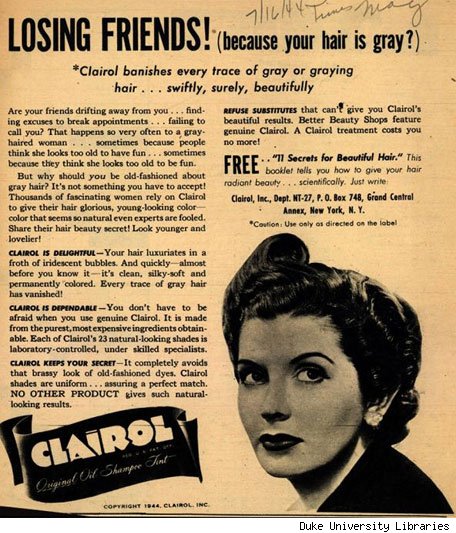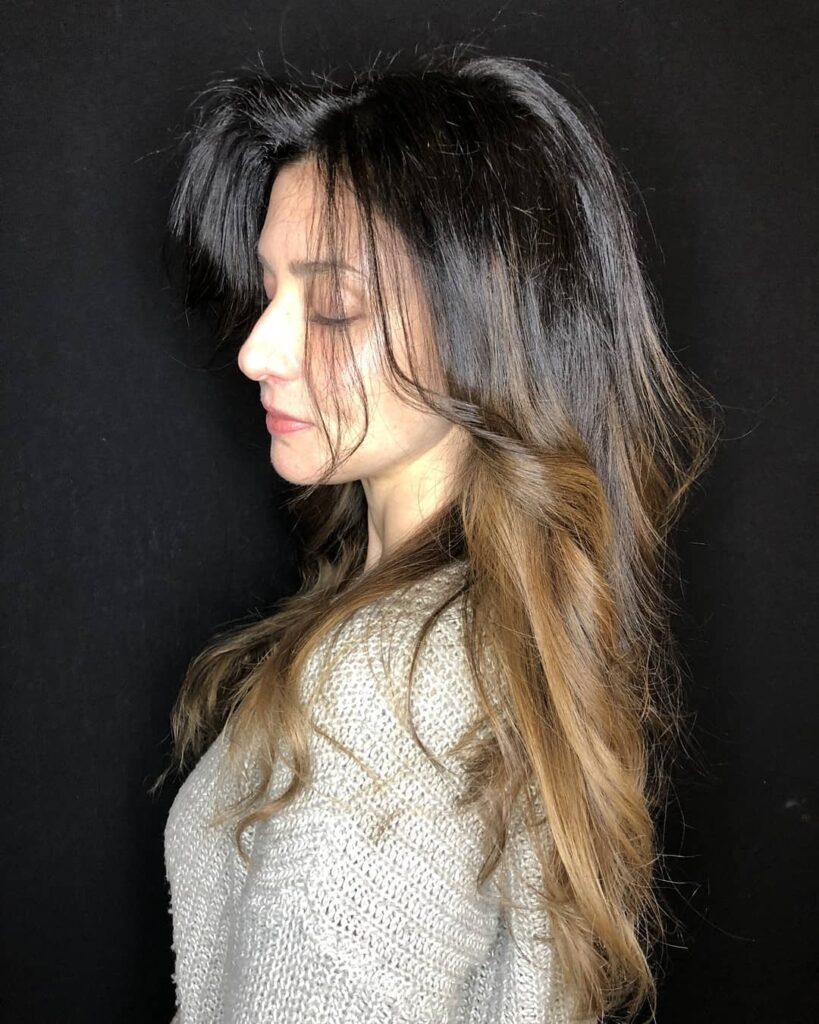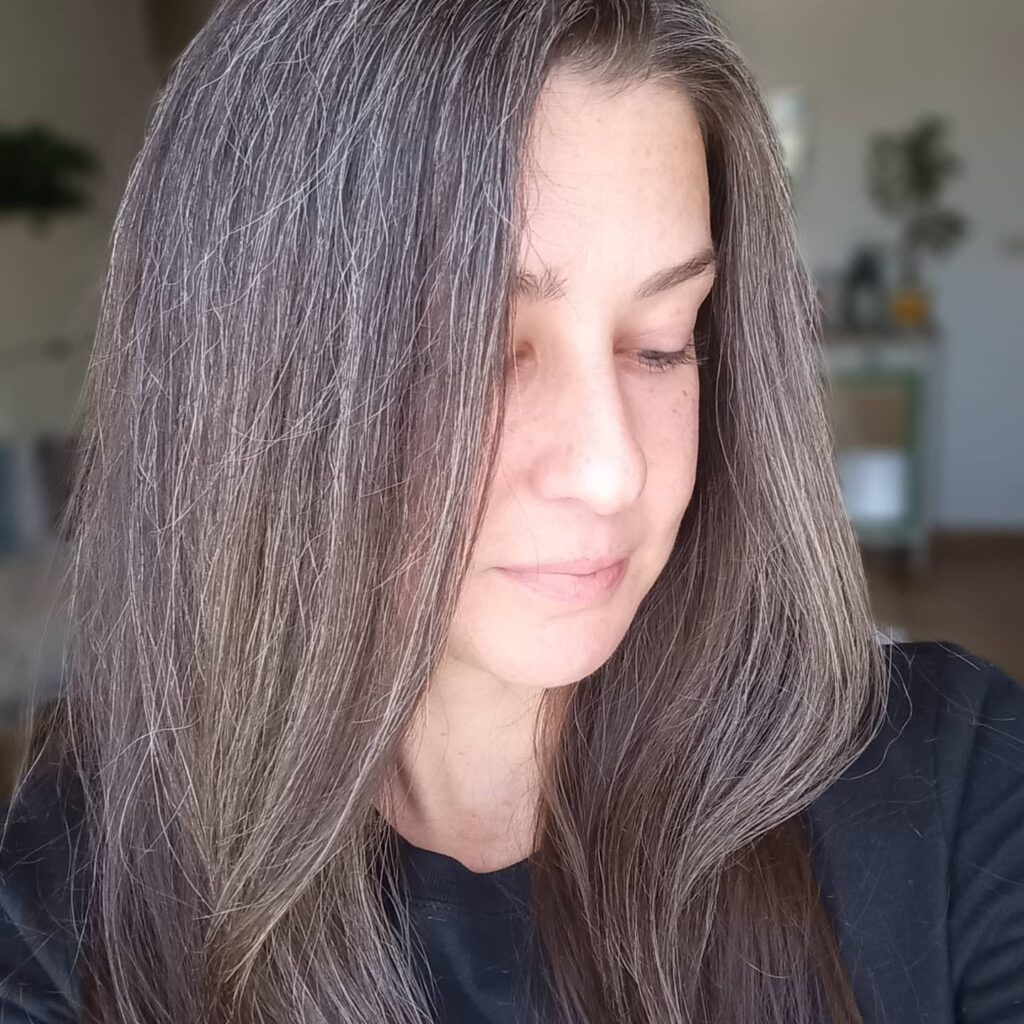We know there are loads of double-standards when it comes to how men and women exist in society. Assertive men are respected leaders while assertive women are labeled aggressive or “too much” (or my personal favorite, “a b****”). Men can cry and be considered courageous but when women cry, they’re emotional and incapable.
The double-standards are especially apparent for physical appearance, specifically when it comes to age and aging – i.e., men are allowed to and women aren’t. So, when it comes to gray hair – widely considered an obvious hallmark of “age” – a man with any amount of gray hair is considered a “silver fox” while a woman who has even a hint of sparkle has “really let herself go.”
This attitude is part of something called gendered ageism – meaning, while both men and women experience ageism, women experience much more discrimination.
Some quick history

Back in the 17th and 18th centuries, rich men and women powdered their wigs and hair to solidify their higher status. And in the early 1900s, after having a mini-revival in France, using hair powder to achieve gray hair was actually a common beauty routine for women of all ages who wanted to – get this – look more youthful.
It wasn’t really until at-home hair color products were launched in the 1940s and ’50s that attitudes around women having gray hair dramatically shifted. Gray hair went from being celebrated to being one more thing on the list of ridiculous beauty standards women were (and are) expected to meet.
There’s now an entire industry built around fighting gray hair. Which just proves that, like diet culture, you really can create a market for anything when you shame enough people into fixing a problem that was never a problem in the first place.
Buck the system
Ok, back to gendered ageism. That Clairol advertisement above sounds archaic, but in many ways our attitudes towards women with gray hair haven’t evolved much beyond that. There is still a lot of stigma around getting older, especially for women. And even though men generally start going gray earlier than women, it is primarily women who are pressured to cover it.
But increasingly, women are fighting back against this pressure.
There are numerous Facebook groups and Instagram accounts featuring women from across the globe documenting their graying process. These spaces are full of tips, emotional support, and general kumbaya sisterhood energy. The hashtag #silversisters on Instagram has over 311,000 posts. A popular 2020 documentary called Gray is the New Blonde is all about the negative (and outdated) views of women with gray hair.
But why do we need all this hype in the first place? Why is me letting my hair grow naturally from my head in still considered a “badass” move in 2021?
Because it’s bucking an entire system that for the past millennia has tried to dictate how women should or shouldn’t look.
The rule, not the exception
Women getting to simply exist as they are should be the norm, not an exception. We shouldn’t need support groups. We shouldn’t need to worry about not being taken seriously, being passed over for promotion, or even being fired. We shouldn’t be made to feel shame about something as innocuous as our hair color.
We don’t live in that world yet, but we are well on our way. It’s now far more common to seeing a woman walking down the street with half white-half whatever-color than it was even 10 years ago. There are more products to help care for gray hair (verses just covering it up) than ever before. Older, gray-haired women are more visible on social media, which has also started changing the conversation around aging.
My motivation wasn’t nearly as deep as the “stick it to the Man” stand that many women take when choosing to ditch the dye. But now being dye-free, I have a much better appreciation for that stand.
My story
I found my first gray hair the day I graduated college. I was 21. And horrified.
I originally started covering my roots because I didn’t want to look “old.” Then in my 30s, I kept covering them because I was afraid of not being taken seriously at work. I’m not alone in that – the fear of appearing incompetent is apparently a top reported concern among women debating whether to go gray.
I stopped dying my hair in November 2018. Saving money and avoiding hair damage were the practical reasons. Plus, my hairdresser at the time had been wanting me to grow my roots for ages. She lightened the ends of my hair to ease the transition, and I’ve never looked back. Ok, I’ve occasionally looked at pictures of me with darker roots and missed those days, but not enough to dye them again.


It’s true that working remotely full-time has allowed me a bit more flexibility or freedom around how my hair looks. But for the first year – arguably the roughest stage if you’re doing a natural gray transition – I was still going into an office. And people generally either didn’t notice or didn’t care.
Nearly three years on, my hair is now a gray-brown blend. Any comments I get now are largely positive (and the few negative ones aren’t worth wasting blog space). Over the summer, another woman with visible grays came up to me at a party and gave me a fist bump (because COVID) as if we were part of some exclusive club. That moment reminded me that any problems society may have with my hair was society’s problem – not mine.
If you’re on the fence about going gray, I can tell you from experience that people will come out of the woodwork to support you. Including me.



